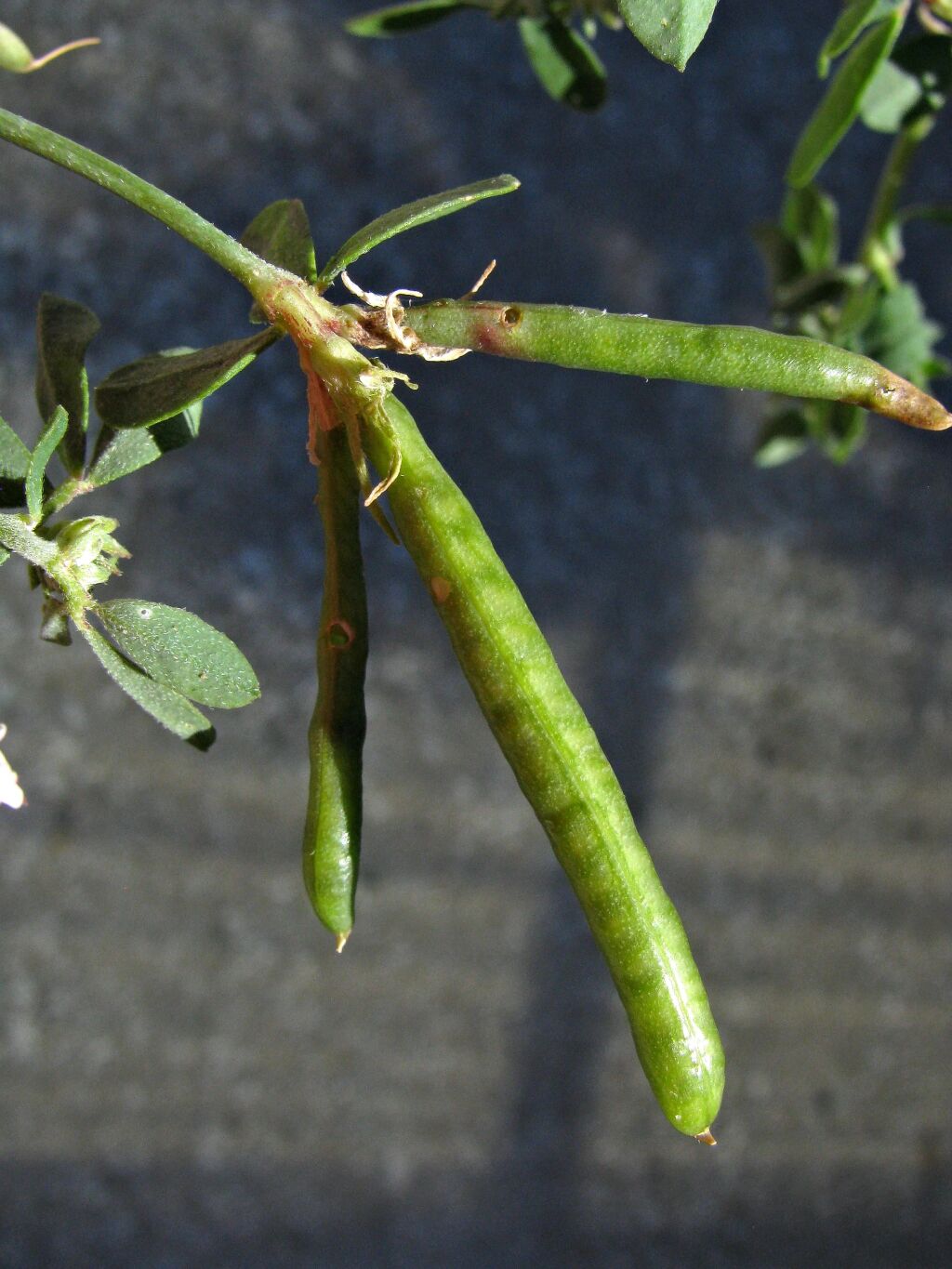Lotus australis
Andrews Austral TrefoilErect or ascending perennial herb or subshrub; stems to 60 cm tall, glabrous or densely appressed-pubescent, somewhat flexuose. Leaflets obovate to oblanceolate, rarely linear, glabrous or pubescent, apices acute; basal pair 6–35 mm long, 1–8 mm wide; terminal three 8–35 mm long, 1–10 mm wide. Inflorescences mostly 3–8-flowered; peduncle 2–15 cm long; calyx campanulate, 5–12 mm long, sparsely hairy or glabrous, teeth erect in bud, equal, longer than tube; corolla 10–22 mm long, white, pink, rose or purple; standard broadly ovate, longer than keel; keel obtusely curved along lower edge, beak dark. Pod terete, 2–5 cm long, 1.5–4 mm wide, virtually glabrous; seeds 8–20, subglobose, 1.5–2 mm long, compressed, mottled, dark brown. Flowers mainly spring.
MuM, Wim, GleP, Brid, VVP, VRiv, RobP, MuF, GipP, OtP, WaP, Gold, CVU, DunT, NIS, EGL, EGU, WPro, HSF, HNF, OtR, MonT, VAlp. All States except NT. Scattered widely but discontinuously across the State, particularly in near-coastal areas, mostly in grassland and open-forest.
An extremely variable species in terms of indumentum, leaflet size and shape, flower size and number and length of peduncle (over the years, various other authors have recognised many distinct varieties or forms but there are many intermediates).
See also notes under Lotus cruentus.
Jeanes, J.A. (1996). Fabaceae. In: Walsh, N.G.; Entwisle, T.J., Flora of Victoria Vol. 3, Dicotyledons Winteraceae to Myrtaceae, pp. 663–829. Inkata Press, Melbourne.
 Spinning
Spinning


